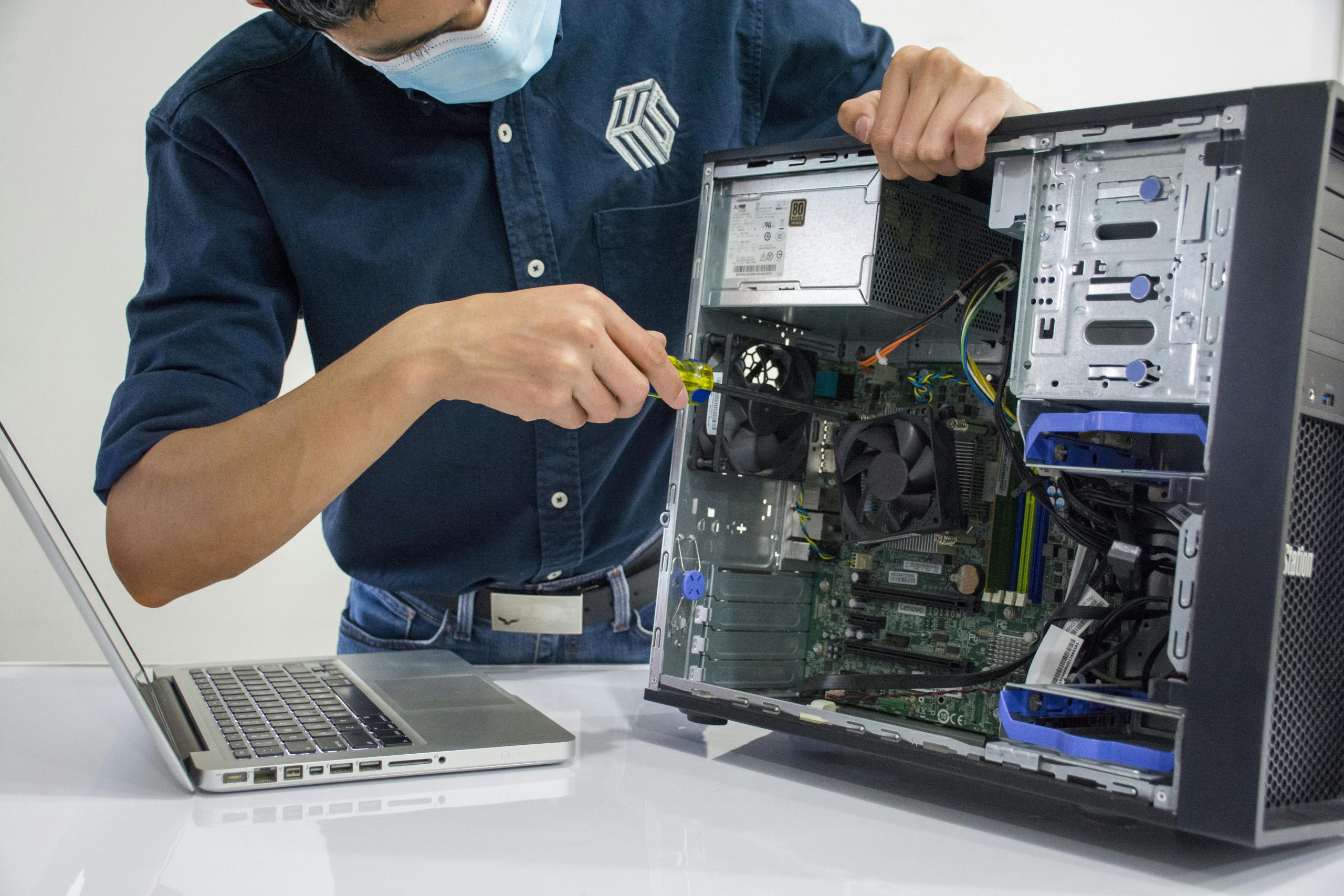The Ultimate Guide to Removing a Stuck Screw in Your Laptop Repair
Laptop repairs can be both daunting and rewarding, offering the satisfaction of restoring your device to perfect working order with your own hands. However, they can also come with unexpected challenges like dealing with a stubborn screw that refuses to budge. This situation is frustratingly common, particularly as laptop components are often compact and delicate, necessitating precision and care. If you’ve found yourself facing a stripped or stuck screw during a laptop repair, specifically near a crucial component like the CPU fan, you’re not alone. Let’s delve deeper into understanding why screws get stuck, the tools you can use, and the step-by-step methods to safely remove them.
Understanding Why Screws Get Stuck
Manufacturing and Installation Issues
One common reason screws in laptops become stuck can be traced back to the manufacturing or assembly process. During the initial assembly, screws might have been inserted with excessive torque, causing them to become almost impossible to remove without specialized tools.
Corrosion and Threadlockers
Over time, screws can corrode, especially if exposed to humidity or liquid spills, which is not uncommon in electronic devices like laptops. Additionally, manufacturers sometimes use threadlockers—a kind of glue—to ensure screws remain tight during the device’s lifespan, which can complicate efforts to remove them during a repair.
Stripped Heads
Finally, a screw head that’s been stripped due to using the wrong size or type of screwdriver can make removal frustrating, as it offers less grip to rotate and loosen.
Tools for Tackling Stubborn Screws
Precision Screwdriver Set
Invest in a good-quality precision screwdriver set, which is crucial for any laptop repair. Make sure it includes various sizes and types of heads, particularly Philips, as laptops commonly use these.
Rubber Bands
A rubber band can provide the extra grip needed when a screw head’s shape is worn.
Penetrating Oil
This tool can be beneficial for loosening a screw that might be stuck due to corrosion. It works by seeping into the threads, reducing friction.
Screw Extractor
These are specially designed tools for removing screws with stripped heads. They come in various sizes, corresponding to the diameter of the screw you’re tackling.
A Dremel Tool
In some cases, you might need a Dremel or a rotary tool to make a new groove on the screw head to allow a flathead screwdriver more grip.
Methods for Removing a Stuck Screw
Method 1: The Rubber Band Trick
- Step 1: Lay a sturdy rubber band flat across the screw head.
- Step 2: Firmly press your screwdriver into the screw head, ensuring the rubber band fills in any gaps the stripped screw might have.
- Step 3: Apply steady, gentle pressure and slowly turn the screwdriver counter-clockwise.
The rubber band increases friction, providing a better grip and preventing further damage to the screw head.
Method 2: Penetrating Oil Application
- Step 1: Apply a small amount of penetrating oil directly onto the screw.
- Step 2: Allow the oil to sit for about 15-20 minutes to penetrate and reduce any friction.
- Step 3: Attempt to remove the screw using your precision screwdriver.
This technique is particularly useful if corrosion is involved. Do ensure to clean any excess oil as electronic components can be sensitive to liquids.
Method 3: Using a Screw Extractor
- Step 1: Select a screw extractor that matches the size of the screw.
- Step 2: Place the tip of the extractor into the screw head.
- Step 3: Turn the extractor counter-clockwise with your screwdriver. Most extractors have a reverse-threaded tip, designed to grip and remove stuck screws.
This method is a go-to if the screw head is too damaged for any grip at all.
Method 4: Creating a New Groove
- Step 1: If possible, carefully use a Dremel tool to create a new groove across the screw head.
- Step 2: Use a flathead screwdriver that fits snugly within the groove.
- Step 3: Gently turn the screwdriver, applying firm but careful pressure.
Be extremely cautious with a Dremel tool; it’s best suited for metallic screws that are less embedded in surrounding components.
Preventive Measures for Future Repairs
Choose the Right Tools
Ensuring you use the correct size and type of screwdriver can prevent the screw head from getting damaged in the first place.
Regular Maintenance
Keeping your device clean and dry can reduce the risk of screws becoming corroded. Regularly clean your cooling fans and inspect for dust and debris that might accelerate wear.
Store and Handle Components Safely
When disassembling a laptop, store screws and parts in a systematic manner. Label and categorize them to avoid applying wrong methods when reassembling.
Final Thoughts: The Art of Patience and Precision
When it comes to laptop repairs, patience is as essential as the tools you use. Rushing the process could lead to irreversible damage to sensitive components. Taking the time to carefully assess and apply the appropriate method is half the battle in successful laptop repair.
Whether you’re a seasoned tech enthusiast or a beginner tackling your laptop issues for the first time, dealing with tricky screws doesn’t have to be a task of despair. With the right strategies and tools in your toolkit, you can navigate this common obstacle and continue with your repair tasks efficiently and effectively. Happy repairing!
Share this content:




Great article on tackling stuck screws during laptop repairs! Here are a few additional tips and insights that may help: